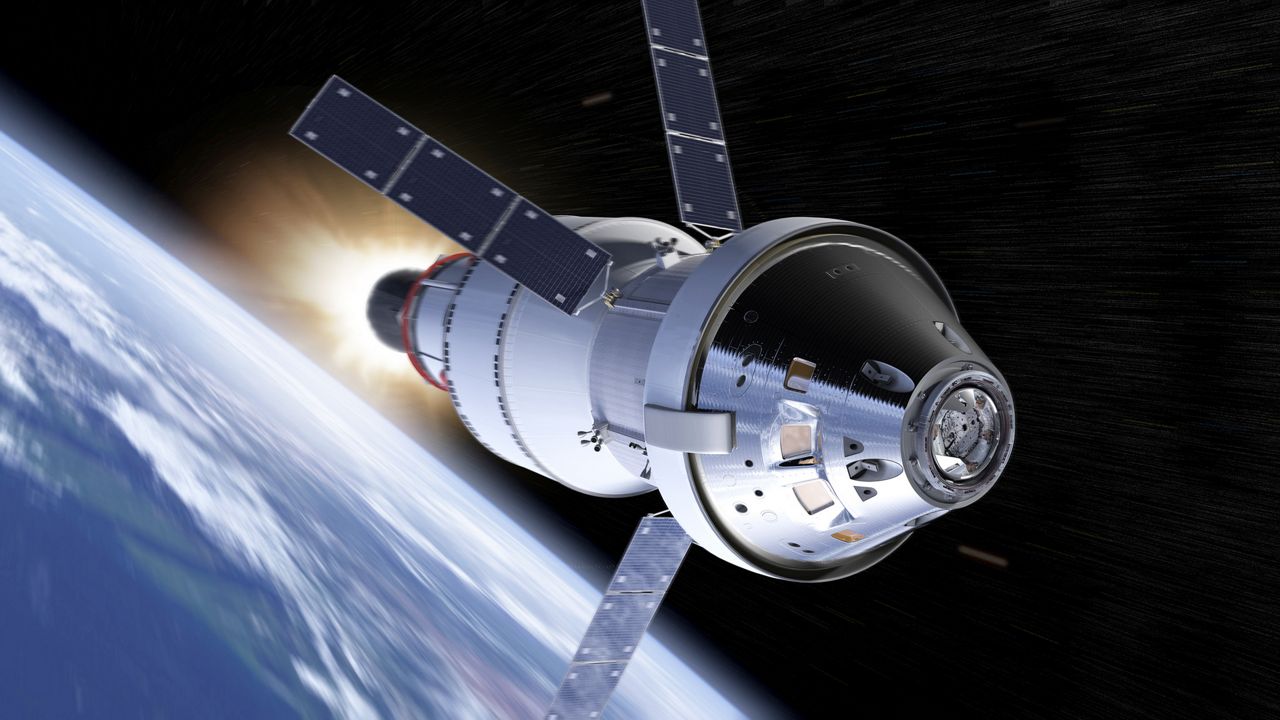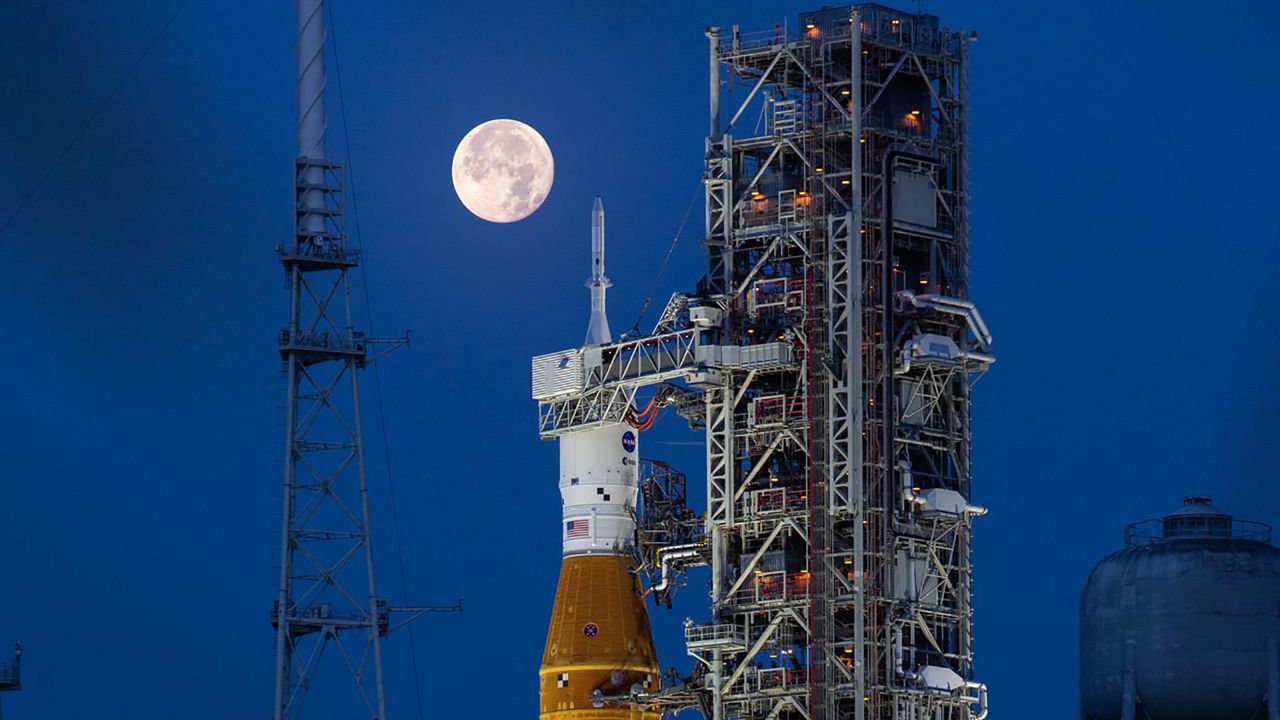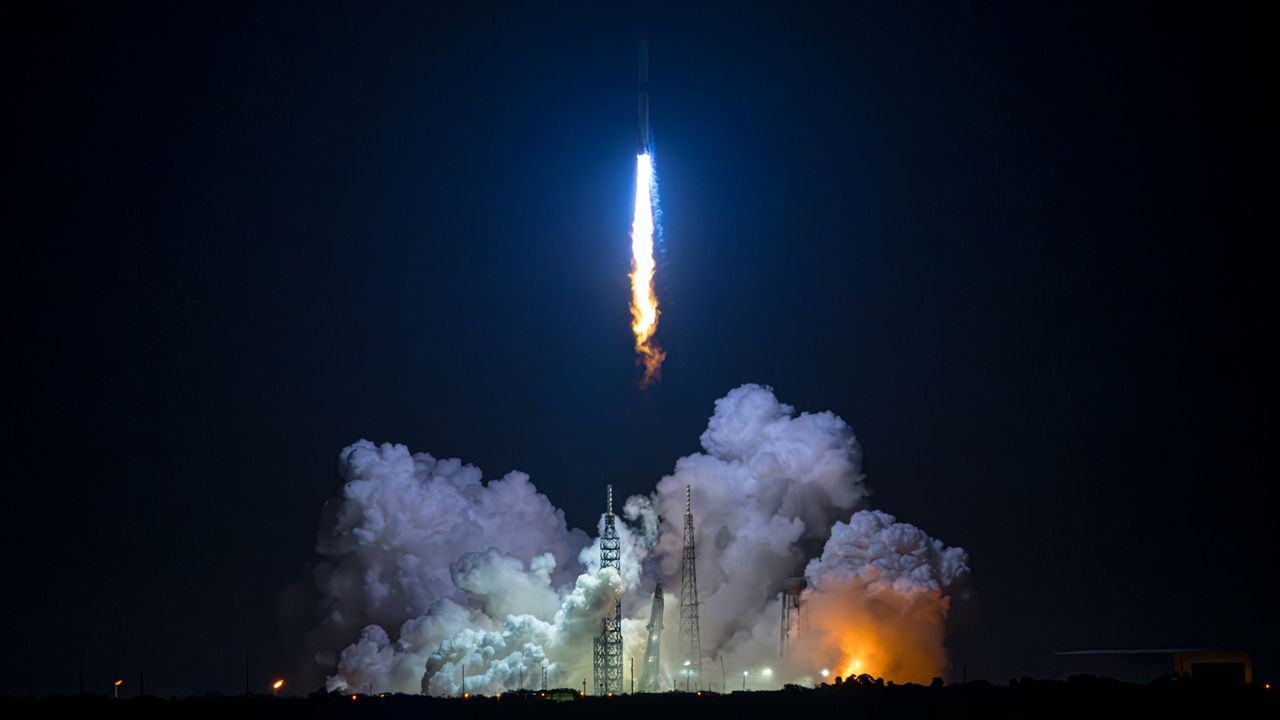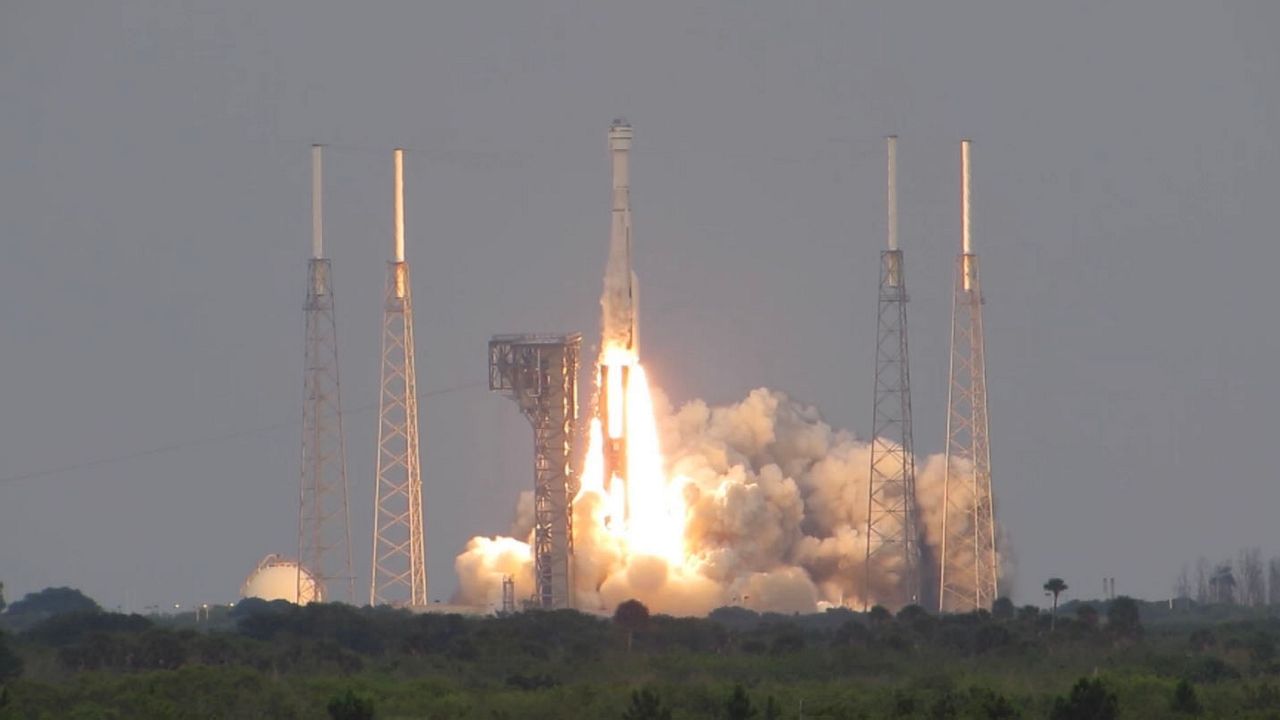KENNEDY SPACE CENTER — On the 53rd anniversary of the first Apollo moon landing, NASA announced the potential launch dates for the Artemis 1 mission, which will be a step in returning humans to Earth’s lunar sister.
What You Need To Know
- The possible launch dates are: Aug. 29, Sept. 2 and Sept. 5, 2022
- NASA officials explain what has been involved in the Artemis 1 mission
- RELATED: As Artemis-I gets launch date, Apollo workers reflect on 53rd moon landing anniversary
During a teleconference on Wednesday morning, NASA’s Associate Administrator for Exploration Systems Development Jim Free gave the potential dates for the launch of the Artemis 1 mission:
- Aug. 29, 2022: 8:33 a.m. EDT
- Sept. 2, 2022: 12:48 p.m. EDT
- Sept. 5, 2022: 5:12 p.m. EDT
Free stressed that these dates are “launch attempts” and admitted that NASA was not sure about those liftoff dates due to a repair of a hydrogen leak.
As engineers were working to repair a leak that occurred during the wet dress rehearsal for Artemis 1 on June 20, it was discovered that a collet — which is found inside the wall of the rocket’s engine section and holds an umbilical plate on — had some loose fasteners, which were fixed, Free explained.
“That actually gave us a little pause of wondering if we’re going to be able to make launch attempts on those three dates,” he said.
Free said those three dates are not set in stone and will be confirmed during a flight-readiness review.
“We are trying to make sure everybody understands that this is the first time that we’re going to try to launch this vehicle," Free said. "We are going to be careful, we are going to work hard to meet the attempts on those dates that I gave you and do our best to position ourselves to have the confidence in those dates.”
Cliff Lanham, senior vehicle operations manager of the Exploration Ground Systems Program, also spoke during the program and gave a step-by-step presentation of the continuing tests and operations that are needed before another wet dress rehearsal.

About the Artemis 1 mission
The Artemis 1 mission is an uncrewed flight test that is designed to provide information to researchers that will be used for the crew missions Artemis II in 2024 (where astronauts will have a lunar flyby) and the Artemis III in 2025, where humans return to the moon.
The Artemis 1 mission is to have NASA’s Space Launch System (SLS) rocket, which is 322 feet tall (17 feet taller than the Statue of Liberty), send the Orion capsule toward the moon.
“It will travel 280,000 miles from Earth, thousands of miles beyond the moon, over the course of about a four- to six-week mission. Orion will stay in space longer than any ship for astronauts has done without docking to a space station and return home faster and hotter than ever before,” NASA has stated.
The objectives for the mission are pretty straightforward. During Wednesday’s teleconference, Artemis Mission Manager Mike Sarafin said one of those objectives is to test Orion's heat shield.
“Our first and our primary objective is to demonstrate Orion’s heat shield at lunar re-entry conditions. So we want to demonstrate that it can withstand the high speed and high heat that the spacecraft will encounter when it re-enters the Earth’s atmosphere,” Sarafin explained.
When Orion is returning from the moon, it will reach speeds of 24,500 mph, or about Mach 32, and will experience temperatures half as hot as the sun outside of the heat shield, Sarafin said.
He said those speeds and temperatures are far greater than what objects like SpaceX’s Dragon capsule experience when returning from low-Earth orbit.
And while the Artemis 1 mission does not have a human crew, Lanham said the Orion capsule will not be empty. Mannequin Commander Moonikin Campos will test the spacecraft’s systems.
NASA named the mission to return to Earth’s lunar neighbor Artemis, as a homage to the Apollo moon landing. In Greek mythology, Artemis is the twin sister of Apollo and the goddess of the moon.






